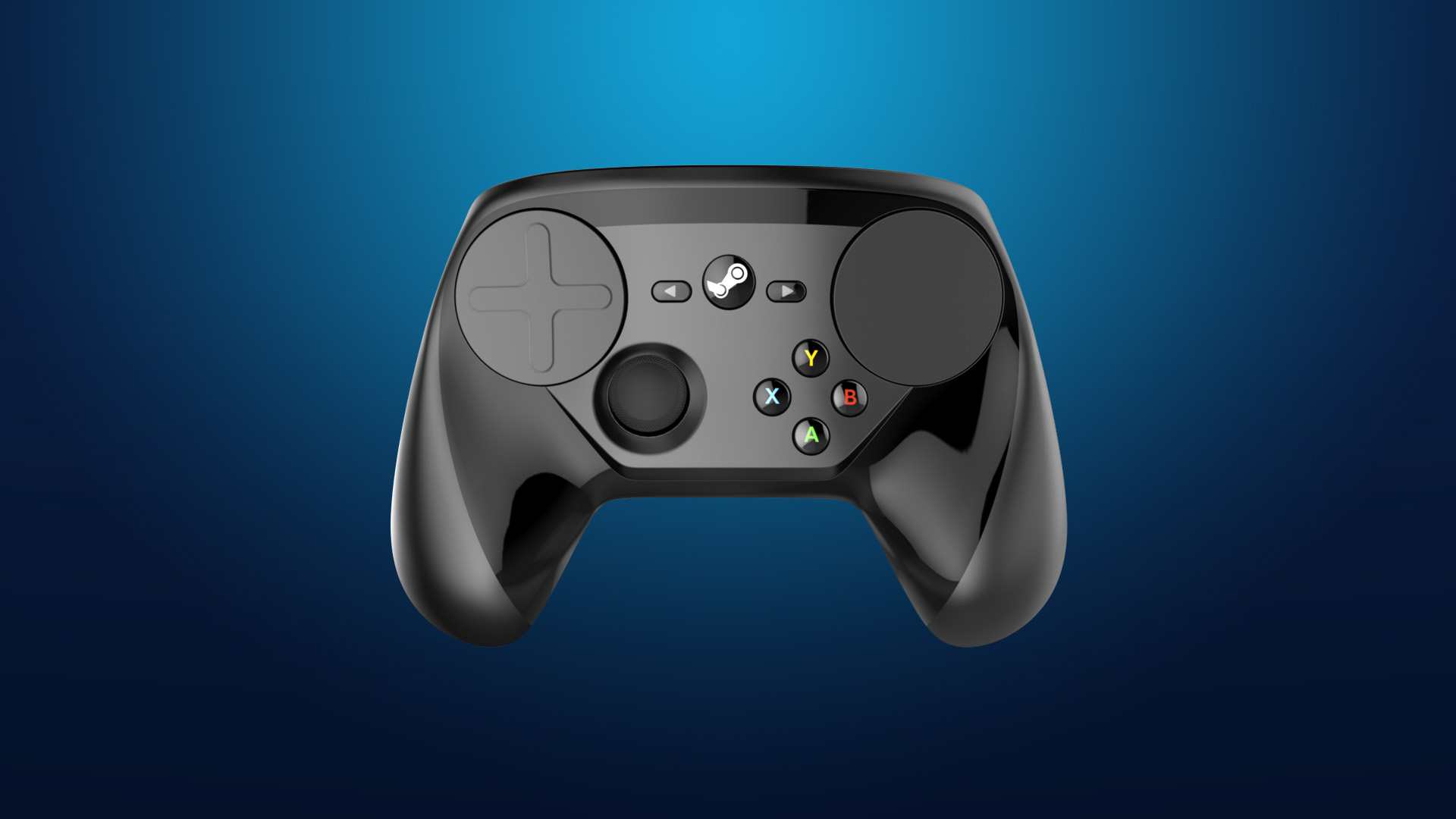Wait for the next version
PC gaming has come a long way since I first witnessed it in the ’80s. There were hundreds of peripherals, from first- to third-party controllers, joysticks, proprietary flight sim devices, to full-on vibrating vests for games like Mech Warrior. On my journey through the PC world I’ve seen it all, and most of it was expensive and inelegant.
Thankfully, Microsoft came around with a unified solution eventually: Xbox controllers. Pretty much every PC gamer I know uses one, and for the most part, modern games are plug and play. Except, Valve recently decided that it wants to get in on the action and took the Xbox design a step further, integrating full-on keyboard and mouse support into it.
Having spent the last week with it however, I’d recommend waiting for the next iteration.

As I’ve stated in the past, the build is a bit flimsy, and over time you really start to feel how awkward the design is. When I opened up the battery cover for the first time and tried to close it, I felt like I was breaking the controller. The paddles have been conspicuously built into the cover itself, which has a lot to do with it, but it doesn’t necessarily feel like a $50 device, all told. On the flipside, there’s an aura of familiarity to the Steam Controller. It has your classic face button setup, with the same exact colors and letters as the Xbox pad — a PC staple that you’re probably already used to. The main difference lies in the left and right paddles on the back, in addition to the two triggers and two bumpers, as well as the two pads that sit above the lone analog stick.
Even after a week of testing, I still find the choice to include two pads a bit odd. Again, the left side is absolute garbage if used as a traditional d-pad. Playing platformers is a chore, and I had to constantly rely on the analog stick for movement — and in some cases when the game didn’t support it, map WASD or the d-pad to it. It’s just not built for precision if you’re not using it like a mouse. For those games that do utilize both pads however, like shooters, it’s actually quite intuitive. It takes some getting used to, but if you fine-tune your sensitivity settings both in-game and on Steam, it manages to transcend a traditional controller, and come closer to something like a mouse and keyboard setup.
It’s at this point of clarity that I felt like I was at a crossroads. I mean, it works well with a lot of games — I found it to be more than adequate for Valkyria Chronicles for instance — but it’s just so limited that I often found myself swapping out an Xbox One controller due to frustration. In that sense, it doesn’t really succeed in being a one-stop shop for PC, which isn’t ideal. There are a few genres where you’ll find a degree of success with it (racing as well as shooters), but it never really measures up to its competition.
The best part of the device however is the heavy amount of customization power it holds. If you actually dig down into Steam’s settings, you can switch up nearly every aspect of the unit. Every button is swappable, down to the paddles on the back, and even the two pads can be swapped to emulate a mouse or analog sticks. Everything right now has to be done manually though. While there are plenty of options for developer-based “recommended” settings and community suggestions, there are very few people out there who actually have a Steam Controller in their hands. As such, I had to look up some configurations and manually input them, which took upwards of 15 minutes for each individual game. Heck, I didn’t even discover the gyrometer function until a few days in.
And really, that’s the target audience for the Steam Controller — hardcore PC fans who like to tinker almost more than they actually play (hell, you need to do a lot of legwork if you want to use your device with non-Steam games, like for example, The Witcher III if you bought it at GOG). Over the years I’ve kind of taken the middle road, as I like the accessibility of consoles, and the open nature of the PC platform, and the Steam Controller kind of straddles both philosophies in that way. It’s a gateway for console fans to enjoy PC games more, but it’s still not as reliable as an Xbox controller.
It’s also very easy to set up. If you pop in the included Bluetooth dongle, you’re basically good to go after pushing the giant Valve button in the middle of the controller. If you’re going the wired route, your PC should instantly recognize it. While there are optional drivers you can install on the unit itself (similar to Xbox One), it’s a plug-and-play affair with zero stress, and two AA batteries.
Maybe somewhere down the line, the Steam Controller will have hundreds of instant configurations loaded into the OS, and the next iteration of the device itself may be fine-tuned based on the feedback from the first generation. But for now, I’d only pick it up if your curiosity has been piqued, and you game on your PC nonstop.
[This impressions piece is based on a retail build of the unit purchased by the writer.]








